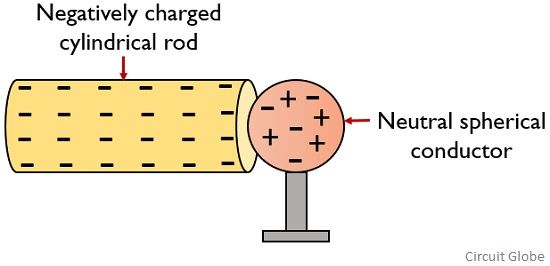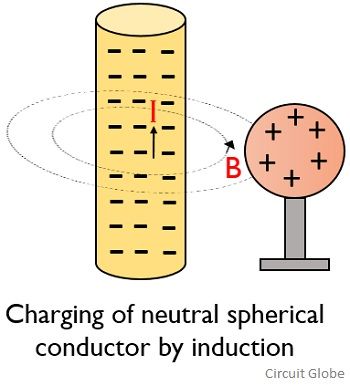AC MACHINES-1 (66761) Theory
10. Realize the principle and construction of 3-phase induction motor.
10.2. Distinguish between induction motor and conduction motor.
Difference Between Conduction and Induction
The major difference between conduction and induction is that conduction allows the charging of a neutral body with a charged body by forming a direct contact with it. While induction is the process of charging a neutral body by a charged body without making any direct contact.
Both conduction and induction refers to the two different ways that causes charging of neutral bodies. Here we will see what major differentiating factors exist between the two.
Definition of Conduction
Conduction is a phenomenon of transferring of energy from a charged body to an uncharged body by direct contact.

Definition of Induction
A phenomenon that causes an uncharged body to get electrically charged by placing it near a charged conductor is known as induction.
For induction to take place, the two bodies must be placed nearer to each other.
And according to Faraday when an uncharged body is placed in a region where the magnetic field is present then the electric field gets generated inside it.

More simply we can say charges of opposite polarity present in the charged body get induced to the uncharged body.
Thus the generated electric field in the second body causes flow of current through it in the opposite direction.
Key Differences Between Conduction and Induction
- Conduction is the process of transferring charges from a charged body to a neutral body. While Induction is the process of inducing the charges on a neutral body by the use of a charged body.
- Conduction needs direct physical contact between the two bodies. However, no physical contact is needed in case of induction, but the two bodies must be placed close to each other.
- In the case of conduction, the current flowing through both bodies have the same direction. Whereas in case of induction, equal current flows through both the bodies but in different directions.
- A potential difference must exist between two bodies for conduction to take place thus requires a gradient path. As no direct contact is maintained at the time of induction thus the gradient path is not needed.
- As the charge gets transferred in case of conduction thus there is a reduction in the amount of overall charge present in the charged body. While in case of induction the charge on the initially charged body remains the same even after inducing, charges of opposite polarity in the other body.
So, this discussion simply concludes that conduction allows the charge flow due to electric field produced inside it. But induction permits flow of charge carriers due to change in magnetic field.